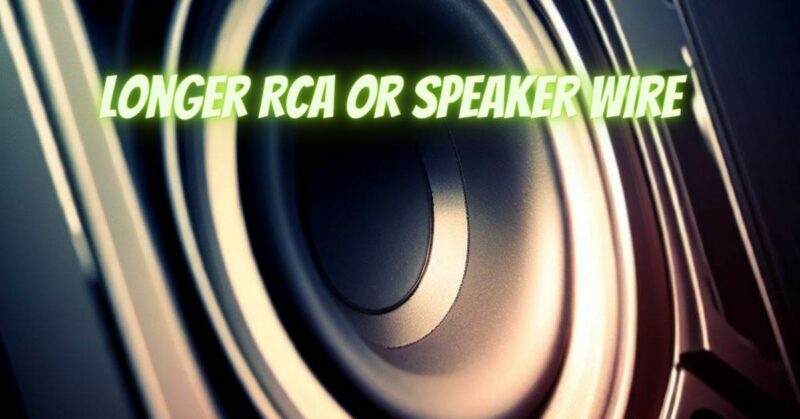In the intricate realm of audio setups, the choice between longer RCA cables and speaker wire becomes a pivotal decision, especially when aiming for optimal sound quality. As audiophiles strive to strike the perfect balance between signal fidelity and convenience, questions arise about which option is best suited for different scenarios. This article delves into the nuances of longer RCA cables and speaker wire, comparing their attributes and considerations to help you make informed decisions for your audio system.
Longer RCA Cables: Unraveling the Choice
1. Application: Longer RCA cables are typically used to connect audio source components (like turntables, CD players, or streaming devices) to amplifiers, preamps, or receivers.
2. Considerations:
- Signal Degradation: Longer RCA cables can introduce signal degradation due to resistance, capacitance, and susceptibility to interference. This can result in loss of detail and clarity, particularly in high-frequency ranges.
- Quality Matters: High-quality RCA cables with proper shielding and robust construction can mitigate some of the negative effects of longer lengths.
- Balanced Connections: Balanced connections using XLR cables are more resistant to signal degradation over longer distances compared to unbalanced RCA connections.
- Listening Environment: The acoustics of your room and the presence of electronic devices can impact how longer RCA cables affect sound quality.
Speaker Wire: Navigating the Choice
1. Application: Speaker wire connects amplifiers or receivers to passive speakers, delivering the audio signal that the speakers reproduce as sound.
2. Considerations:
- Resistance and Length: Like RCA cables, longer speaker wires can introduce resistance, which affects signal strength. However, the impact is generally less noticeable compared to longer RCA cables due to the higher power levels involved in speaker connections.
- Gauge and Resistance: Speaker wire gauge (thickness) plays a role in mitigating resistance. Thicker wire with lower resistance is recommended for longer distances to maintain signal integrity.
- Bi-Wiring/Bi-Amping: Some systems use separate sets of speaker wire for different frequency ranges (bi-wiring) or separate amplifiers for different drivers (bi-amping). This can affect how signal loss is distributed across the frequency spectrum.
Making the Choice:
- Cable Length: If you require longer connections, consider the specific needs of your setup. For audio source components, explore options like balanced connections if available. For speakers, opt for thicker speaker wire if running longer lengths.
- Quality over Length: Both RCA cables and speaker wire benefit from high-quality construction and materials. Investing in well-constructed cables and wire enhances signal integrity.
- Listening Tests: If feasible, conduct listening tests with both longer RCA cables and speaker wire to gauge any audible differences in your specific system.
Choosing between longer RCA cables and speaker wire depends on your audio setup, needs, and priorities. While longer RCA cables introduce potential signal degradation, speaker wire is generally more forgiving due to higher power levels. Regardless of your choice, prioritize quality construction, proper shielding, and cable thickness to ensure the best possible sound quality over extended distances. In the symphony of audio components, your choice of transmission medium plays a vital role in ensuring that the music resonates with the clarity and authenticity it deserves.


